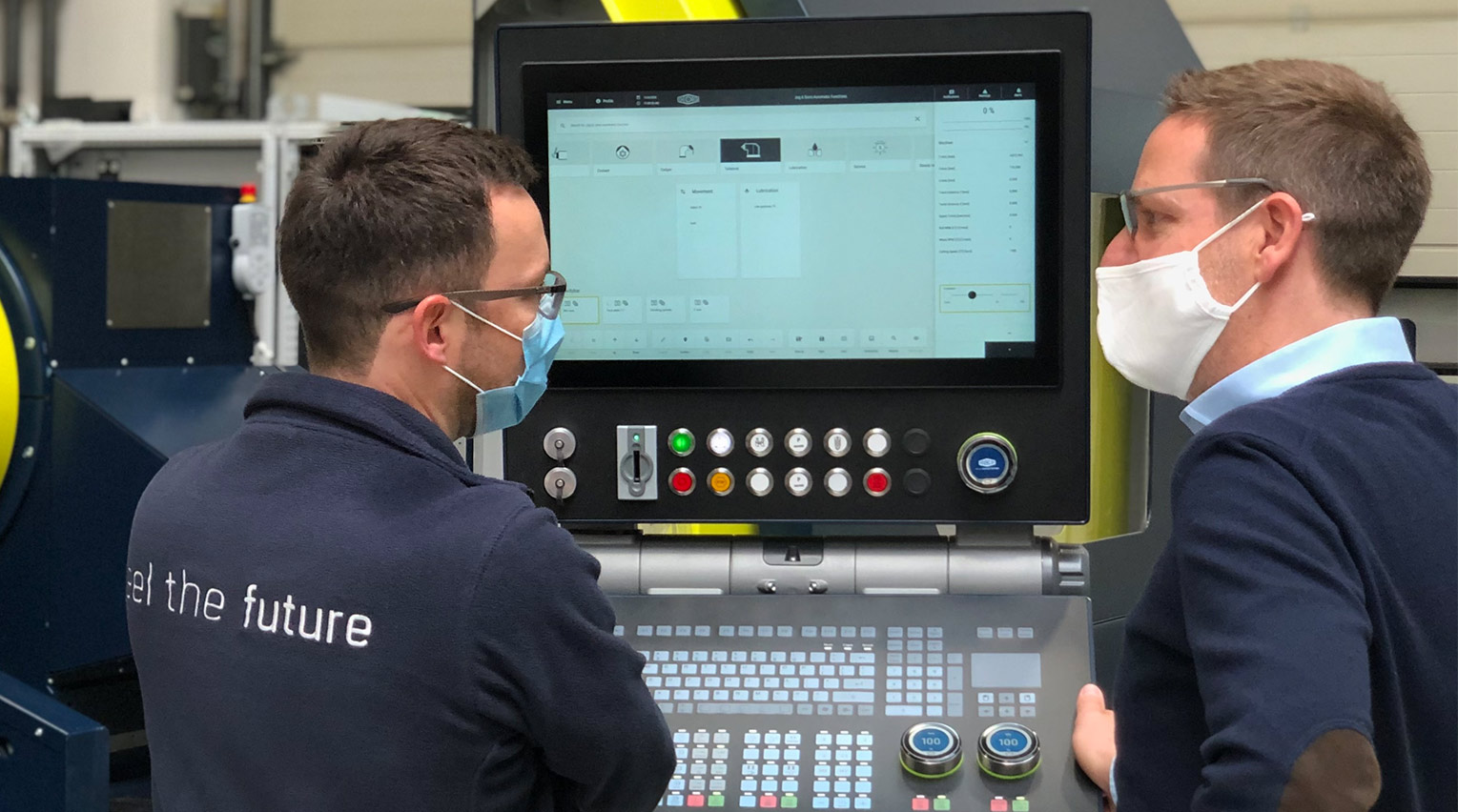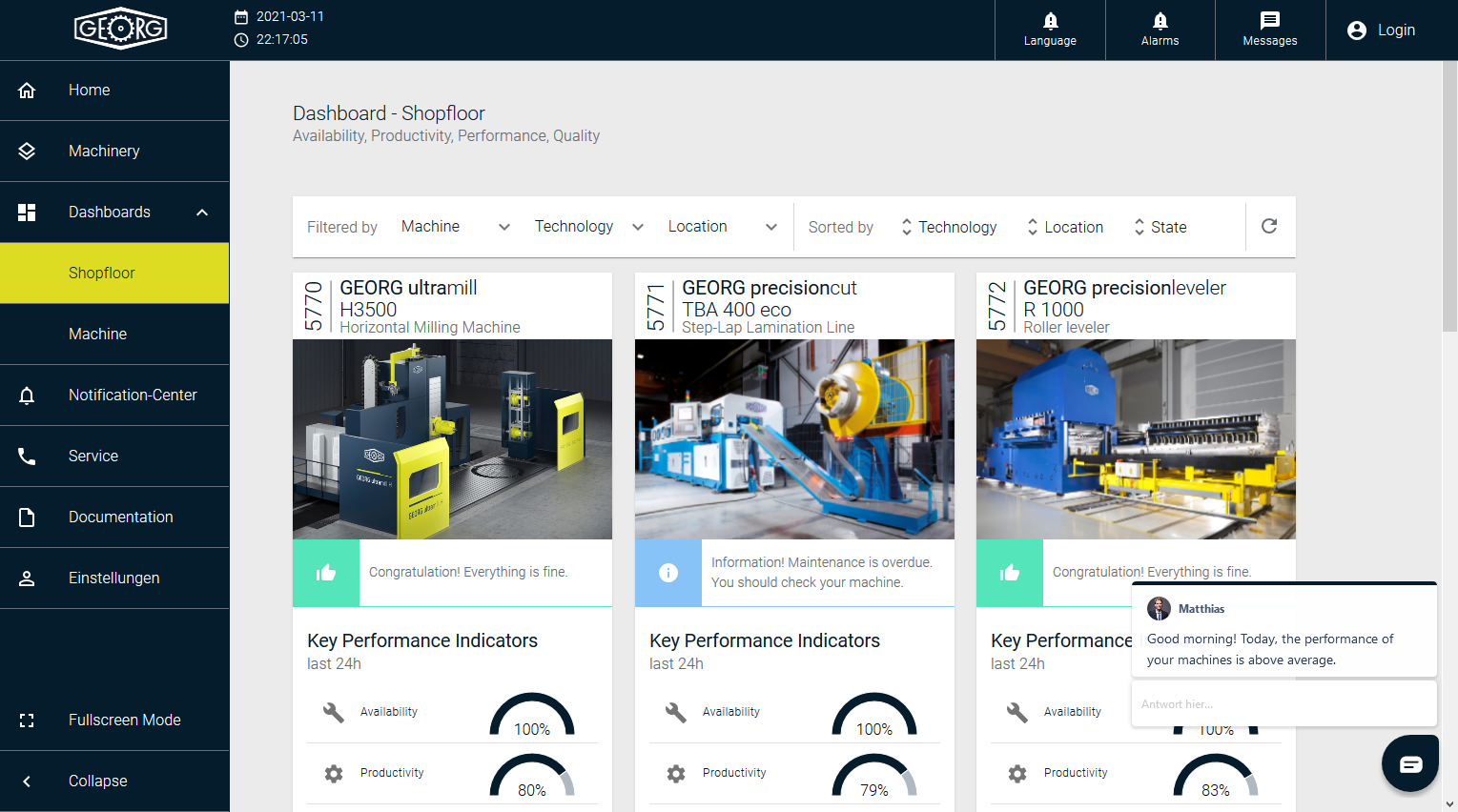OPC / UA as a key success factor in new product development
Digitisation presents a plethora of new challenges in the development of new products. The conventional mechanical engineer must step out of his familiar territory and enter uncharted waters. He has to evolve from mechanical engineer to process optimiser.
The specialist for solutions in coil processing and machine tool manufacture, Heinrich Georg GmbH Maschinenfabrik, is meeting this challenge head-on and is actively lending direction to the transformation from mechanical engineer to process optimiser. Among other things, the company is currently developing a dashboard that focuses on increasing the productivity of its own customers. In addition, the new (roll grinding machine) control equipment offers the highest degree of interconnectivity and interoperability thanks to its seamless integration into the system environment.
This is made possible through consistent use of communication standards such as OPC UA.
Fresh thinking on product development processes
The paradigm shift from product to process also leaves its mark on the development process. The perspective needs to change; innovators need to put on their ‘data glasses’ and use them to look at the following questions:
- What additional data would enable us to optimally structure our process?
- What systems can provide us with this data, and how do we get access to the data we need?
- How can we enhance the data with the knowledge from our process and redistribute it?
Many other considerations will follow, including the question of whether the effort and expense would actually pay off.
Speed up efficiency and time-to-market
Standards help to significantly reduce time, effort and costs. Instead of talking to customers about technical aspects of various interfaces, the focus can be placed on content. This enables efficient development.
The establishment of a communication standard that specifies not only the technology but also the content facilitates and accelerates market access. Georg is benefiting from this advantage in the development of its own web-based dashboard. Umati is a crucial core of the database application. The umati system provided access to a sound data framework and information model developed by experts, thereby accelerating development

By consulting a broad base of stakeholders and modelling the resultant findings into a description of use cases and requirements, umati reduces the effort and outlay for requirements engineering. The necessary reduction and abstraction of these requirements is also achieved, with the definition of the parameters to be transmitted. Furthermore, umati’s existing information model covers a certain volume of not insignificant preparatory work on system architecture, as well as its implementation. This facilitated the generation of important basics for the Georg dashboard, allowing the developers to focus more fully on the machine-specific added value.
Umati’s emphasis on developing a standard for all machine tools also broadens Georg‘s own horizon and thus enhances product quality. And customers retain their machine-specific individuality; umati forms the basis to which extensions are then added for the specific application and the specific machine. Georg also integrates parts of this standard in product areas outside machine tool industry, creating the basis for connecting its dashboard to all Georg machines and systems. This includes, among other things, slitting, cut-to-length and multi-blanking lines, as well as machinery and equipment relating to transformer construction.
In addition, umati gives companies like Georg easy market access outside their own field of machine technology. Any umati-enabled machine can be connected to the dashboard via plug & play. Customers benefit from the straightforward and rapid integration of their umati-enabled machines.
Enabler for new business models
All too often in this day and age, new ideas or business models fail because of a lack of data access. Brownfield is the norm. Many companies have recognised this problem and have already resolved it to some extent, for their own purposes at least. The factory is fully interconnected throughout. Due to a lack of established standards, however, proprietary systems are often used, creating the next ‘brownfield’. New barriers are thrown up and this impedes straightforward market access for external data-driven solutions. Innovations are thwarted.
Georg also routinely faces the challenge of accessing data from proprietary systems, or making such data available. Often, the cost or the complexity of interface integration is so high that a project simply can’t be implemented, or can only be implemented in part. Especially with small tools, the added value for the customer is devoured by the outlay for data collection and provision.
Open standards such as OPC UA and umati can significantly reduce these barriers, and thus enable customer added value.
Shaping the future together
Successful development of new products calls for collaboration, because the transformation from mechanical engineer to process optimiser involves much more than just your own machine technology. It requires active interconnecting and cooperation. Open standards form the common foundation, making a significant contribution to future innovations.






![[Translate to Englisch:] [Translate to Englisch:]](/fileadmin/experience/2024/05/Technikunterricht.jpg)
![[Translate to Englisch:] [Translate to Englisch:]](/fileadmin/experience/2024/05/Annika_Becker.jpg)
![[Translate to Englisch:] [Translate to Englisch:]](/fileadmin/experience/2024/05/wohnzimmer.jpg)
![[Translate to Englisch:] [Translate to Englisch:]](/fileadmin/experience/2024/05/Niederhofer_berg.jpg)
